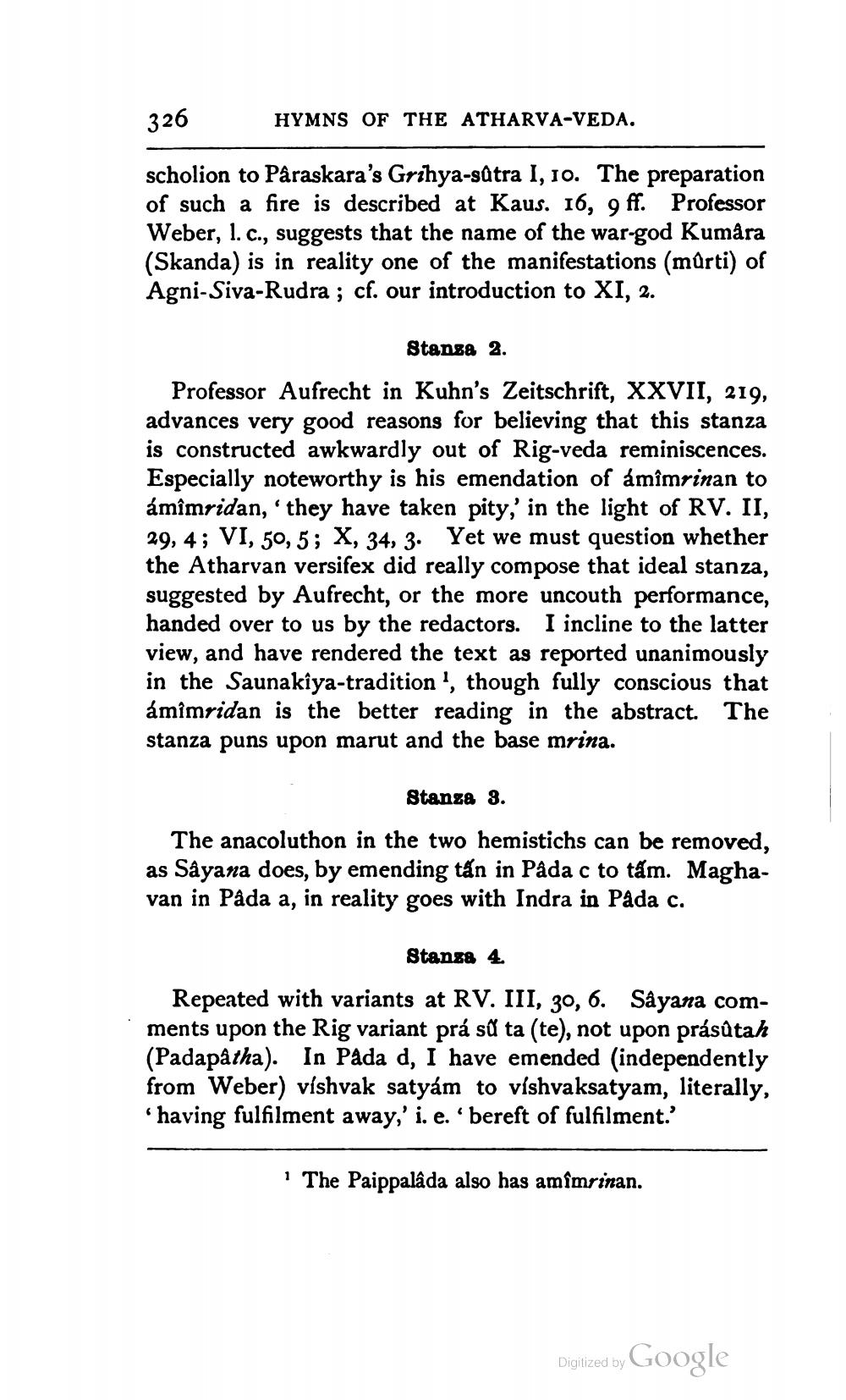________________
326
HYMNS OF THE ATHARVA-VEDA.
scholion to Paraskara's Grihya-sâtra I, 10. The preparation of such a fire is described at Kaus. 16, 9 ff. Professor Weber, 1. c., suggests that the name of the war.god Kumara (Skanda) is in reality one of the manifestations (můrti) of Agni-Siva-Rudra ; cf. our introduction to XI, 2.
Stansa 2. Professor Aufrecht in Kuhn's Zeitschrift, XXVII, 219, advances very good reasons for believing that this stanza is constructed awkwardly out of Rig-veda reminiscences. Especially noteworthy is his emendation of amimrinan to ámîmridan,' they have taken pity,' in the light of RV. II, 29, 4; VI, 50, 5; X, 34, 3. Yet we must question whether the Atharvan versifex did really compose that ideal stanza, suggested by Aufrecht, or the more uncouth performance, handed over to us by the redactors. I incline to the latter view, and have rendered the text as reported unanimously in the Saunakiya-tradition, though fully conscious that ámimridan is the better reading in the abstract. The stanza puns upon marut and the base mrina.
Stanza 3.
The anacoluthon in the two hemistichs can be removed, as Sâyana does, by emending tán in Pâda c to tam. Maghavan in Pâda a, in reality goes with Indra in Påda c.
Stanza 4
Repeated with variants at RV. III, 30, 6. Sâyana comments upon the Rig variant prá sů ta (te), not upon prásůtah (Padapatha). In Pada d, I have emended (independently from Weber) vishvak satyám to vishvaksatyam, literally, having fulfilment away,' i. e.' bereft of fulfilment.'
"The Paippalada also has amîmrinan.
Digized by Google
Digitized by




